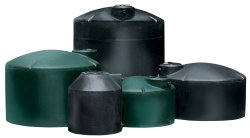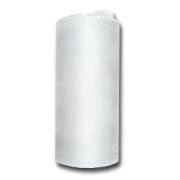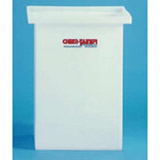What Is Polyethylene And How Is It Different From Polypropylene?
Question: (Oklahoma City, Oklahoma) I was looking at your plastic tanks and I was wondering what is polyethylene and what does it mean when it says some tanks are made from linear polyethylene and some  tanks are made from cross-linked polyethylene? Also I see here there is a polypropylene model, what
tanks are made from cross-linked polyethylene? Also I see here there is a polypropylene model, what
is that?
Answer: Thank you for your inquiry! Those are excellent questions! In general, the differences in material that are used on these tanks are designed to adapt to different conditions in which you might be storing your liquids. They are also intended to help ensure that heavier chemicals or liquids are properly contained.
What is polyethylene?
Polyethylene is a hard and durable plastic that has been produced from the monomer ethene. To create polyethylene, this monomer ethene is polymerized to form the polyethylene material. This means that molecules of ethene have a chemical reaction that causes them to form polymers. These 3 dimensions polymer chains are what makes up polyethylene. While this material is used in a majority of our plastic tanks, polyethylene is widely recognized and has been used in many household items including food wrappers, toys, and plastic bags.
How To Choose A Material For Your Tank
The main distinction made between these tanks is that they are using either the linear polyethylene, crosslinked polyethylene, or polypropylene. Here are some ways to distinguish between these tanks.
Linear Polyethylene
 Linear polyethylene is the standard used in a large number of these plastic tanks. The material is extremely durable and has an excellent impact and environmental stress crack resistance.
Linear polyethylene is the standard used in a large number of these plastic tanks. The material is extremely durable and has an excellent impact and environmental stress crack resistance.
Some of the unique features of this material include:
- FDA approved: This plastic has a natural compliance with USDA and FDA regulations. This makes it capable of being implemented in the storage and processing of food. Most of these tanks have FDA approved resins for storing potable water.
- Weldable: Unlike the other materials, linear polyethylene is extremely flexible and allows for welding. This can be extremely important if you are designing a tank with unique or site specific fittings. The linear polyethylene will be much more likely to adapt to these fittings and create a strong customized tank.
- Maximum operating temperature of 140°.
Crosslinked Polyethylene
 The main difference between linear and crosslinked polyethylene is the level of strength the tank offers. When creating crosslinked polyethylene, a crosslinked molecule is introduced to the polyethylene mix during molding. This molecule reacts with the polyethylene and forms crosslinked bonds throughout the tank. This changes the tank in the following ways:
The main difference between linear and crosslinked polyethylene is the level of strength the tank offers. When creating crosslinked polyethylene, a crosslinked molecule is introduced to the polyethylene mix during molding. This molecule reacts with the polyethylene and forms crosslinked bonds throughout the tank. This changes the tank in the following ways:
- Higher Environmental Stress Crack: Makes the tank stronger and tougher for holding harsher materials or for using in demanding areas.
- No FDA approval: Crosslinked polyethylene does not meet FDA approval for storing food items
- Higher Maximum Operating Temperature of 150°
- Not intended for welding
Polypropylene
 Typically customers choose polypropylene when they require an exceptionally high operating temperatures. The polypropylene material is equipped to handle operating temperatures up to 212°. It has a high stress crack resistance and is autoclavable. However, unlike polyethylene, this material does not have a good impact strength and is not recommended for low or sub-freezing temperatures. Hopefully this overview provides a little more understand as to what is polyethylene and how to choose the right tank.
Typically customers choose polypropylene when they require an exceptionally high operating temperatures. The polypropylene material is equipped to handle operating temperatures up to 212°. It has a high stress crack resistance and is autoclavable. However, unlike polyethylene, this material does not have a good impact strength and is not recommended for low or sub-freezing temperatures. Hopefully this overview provides a little more understand as to what is polyethylene and how to choose the right tank.
Questions? We can help! Call our team at +1-863-261-8388 or fill out our quote request form to discuss your requirements.
